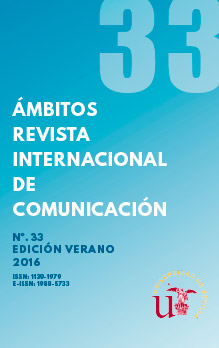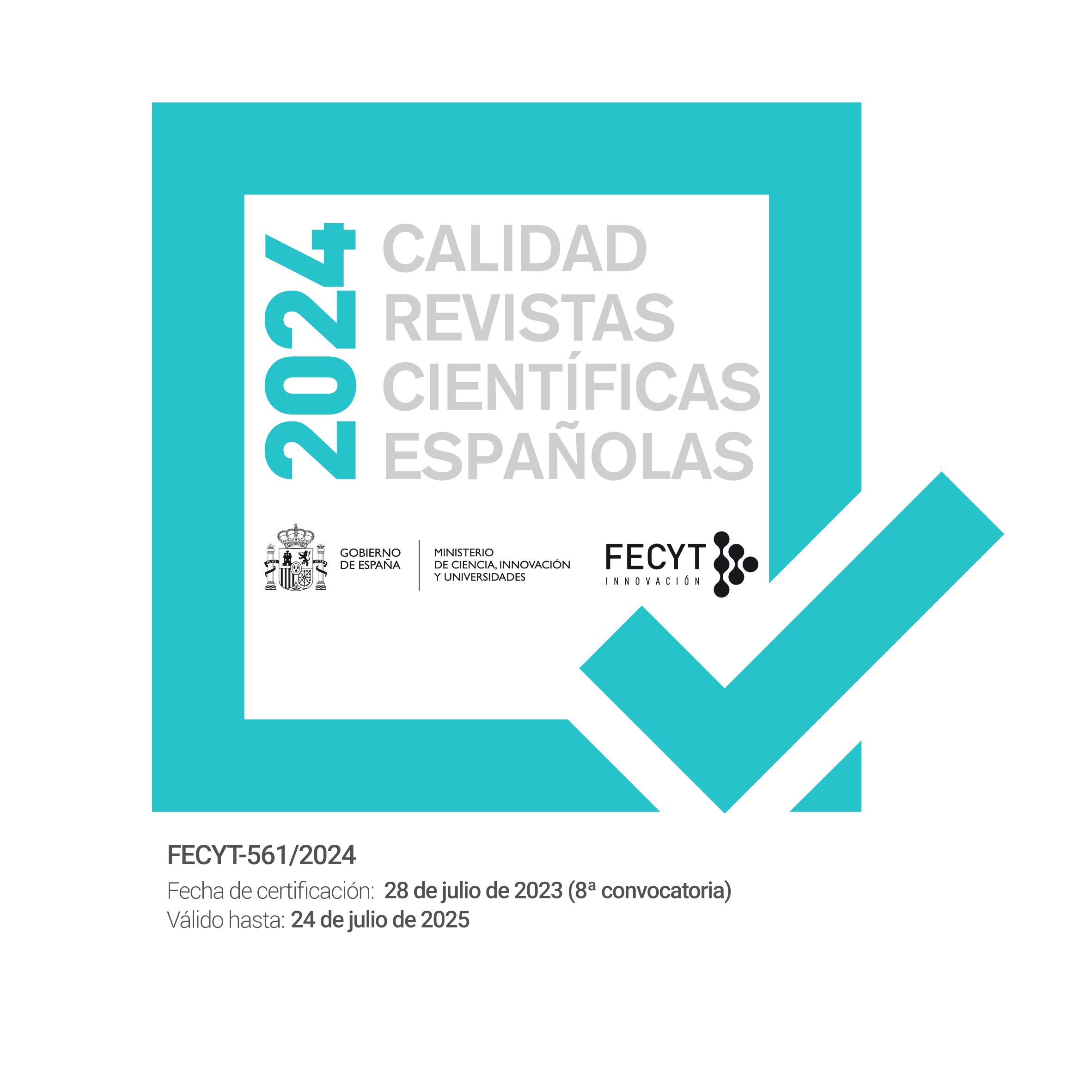Modelos de negocio para el periodismo deportivo de nicho en el contexto postindustrial
Palabras clave:
Periodismo deportivo, periodismo digital, emprendimiento, innovación, periodismo de nicho. Sports journalism, digital journalism, entrepreneurship, innovation, niche journalism.Resumen
Este estudio pretende ahondar en los cambios que la llegada del ecosistema digital ha supuesto para el negocio de los medios de comunicación deportivos, que en muchos casos han apostado por el nicho para generar valor añadido a través de la hiperlocalización o hiperespecialización o la creación de una imagen de marca que permita al usuario diferenciarlo de competidores. Tomando como muestra el censo de nuevos medios lanzados por periodistas desde 2008 en España, se analizan aquellos emprendimientos deportivos de nicho cuyas estrategias han resultado más sostenibles y rentables para hallar patrones de éxito que permitan extrapolar su experiencia a otras iniciativas emprendedoras.
This study aims to analyse changes produced by the advent of digital ecosystem for sports media business, many of which targeted towards niches in order to generate added value through hyperlocal or hyperspecialed content or creation of a brand that allows a user to distinguish it from competitors. Taking the census of new media launched by journalists since 2008 in Spain, we look into those sports niche journalism outlets whose strategies have been more sustainable and profitable so as to find patterns of success and extrapolate their experience to other entrepreneurship news projects.
Descargas
Citas
ANDERSON, C.W. BELL, E. y SHIRKY, C. (2013): Periodismo postindustrial: adaptación al presente. Huesca: Asociación de Periodistas de Aragón
http://www.ecicero.es/wp-content/uploads/2013/03/periodismo_postindustrial.pdf
APM (2015). Informe anual de la profesión periodística. Madrid: APM
ARIAS VALENCIA, M.M. (1999): La triangulación metodológica: sus principios, alcances y limitaciones. México: Universidad de Antioquia
http://www.uv.mx/mie/files/2012/10/Triangulacionmetodologica.pdf
BRADSHAW P. (2012) Disengaging from the news and hyperlocal engagement. Online Journalism Blog
http://ciruelo.uninorte.edu.co/pdf/pensamiento_gestion/20/5_El_metodo_de_estudio_de_caso.pdf
BRUNO, N., NIELSEN, R.K. (2012). Survival is Success: Journalistic Online start-Ups in Western Europe. Reuters Institute for the Study of Journalism, Universidad de Oxford. ISBN: 978-1-907384-08-0
CALVO, I. (2016). Análisis de las disfunciones informativas en la prensa deportiva digital española. Tesis doctoral inédita, Universidad CEU-San Pablo de Madrid.
CARVAJAL, M. (coord..) (2014). Ranking de innovación periodística 2014. Elche: Universidad Miguel Hernández
BRIGGS, M.E. (2012). Entrepreneurial Journalism: How to Build What´s Next for News. Sage: Los Angeles-Londres
CASERO-RIPOLLÉS, A. (2010). “Prensa en internet: nuevos modelos de negocio en el escenario de la convergencia”. El Profesional de la Información, Núm. 6, pp. 595-600
http://www.elprofesionaldelainformacion.com/contenidos/2010/noviembre/05.html
MANFREDI J.L.; ROJAS TORRIJOS, J. L.; y HERRANZ, J.M. (2015). “Periodismo emprendedor: el periodismo deportivo en España”. Revista Latina de Comunicación Social, Núm. 70, 2015. Universidad de La Laguna (Tenerife), pp. 69-90
http://www.revistalatinacs.org/070/paper/1035-UC/05es.html
– (2015b). “Innovación en el periodismo emprendedor deportivo. Modelo de negocio y narrativas”. El Profesional de la Información, Núm. 24 (3), pp. 265-273
http://www.elprofesionaldelainformacion.com/contenidos/2015/may/06.html
MANN, N. (2015). “The Great Journalism Innovation Problem”. En Medium:
https://medium.com/@fieldproducer/the-great-journalism-innovation-problem-ac7ba41cb77c#.m3q4nojzm
MARTÍNEZ CARAZO, P. C. (2006). El método de estudio de caso: estrategia metodológica de investigación científica. Pensamiento y gestión, Nº20. ISSN 1657-6276
http://ciruelo.uninorte.edu.co/pdf/pensamiento_gestion/20/5_El_metodo_de_estudio_de_caso.pdf
NEWMAN, N. (2016). Media, Journalism and Technology Predictions 2016. Oxford: Reuters Institute for the Study of Journalism
http://www.digitalnewsreport.org/publications/2016/predictions-2016/
PHILIPS, A. (2015). Journalism in Context. Practice and Theory for the Digital Age. Londres: Routledge ISBN: 978-0-415-53627-1
STAKE, R.E. (1995). Investigación con estudio de caso. Madrid: Ediciones Morata
– (2010). Qualitative Research: studying how things work. The Guilford Press, Nueva York
Descargas
Publicado
Cómo citar
Número
Sección
Licencia
Ámbitos. Revista Internacional de Comunicación es una revista de acceso abierto, lo que significa que todo su contenido está disponible gratuitamente para el usuario o su institución. Los usuarios pueden leer, descargar, copiar, distribuir, imprimir, buscar o enlazar con el texto completo de los artículos, o utilizarlos para cualquier otro fin lícito, sin solicitar permiso previo al editor o al autor. Esta definición de acceso abierto se ajusta a la Iniciativa de Acceso Abierto de Budapest (BOAI).

A menos que se indique lo contrario, todo el contenido de la edición electrónica se distribuye bajo una " licencia internacional Creative Commons Attribution-NonCommercial-ShareAlike 4.0 ". Puede consultar la versión informativa y el texto legal de la licencia aquí. Esto debe indicarse expresamente de esta manera cuando sea necesario.
En caso de aceptación del manuscrito, los autores ceden los derechos de la obra para su publicación a Ámbitos. Revista Internacional de Comunicación bajo el contrato de licencia Reconocimiento-NoComercial-CompartirIgual 4.0 Internacional (CC BY-NC-SA 4.0). Los autores conservan los derechos de autor y terceros están autorizados a copiar, distribuir y hacer uso de la obra, siempre que cumplan con los términos y condiciones establecidos en la licencia.
- Citar la autoría y la fuente original de publicación (revista, editorial y URL de la obra).
- No los utilice con fines comerciales.
- Si remezcla, transforma o crea a partir del material, debe publicar sus contribuciones bajo la misma licencia que el original.
Se puede encontrar más información en https://creativecommons.org/licenses/by-nc-sa/4.0/deed.es



















